![]() As you travel south along the North Sea coast between Edinburgh and the border with England, there is a dramatic change in the rocks exposed in the cliffs. Closer to Edinburgh, you encounter slightly tilted red sandstones of the rather prosaically named Old Red Sandstone formation, which are Devonian in age – around 350-400 million years old. The picture below is the northern end of Pease Bay, about 30 miles from Edinburgh.
As you travel south along the North Sea coast between Edinburgh and the border with England, there is a dramatic change in the rocks exposed in the cliffs. Closer to Edinburgh, you encounter slightly tilted red sandstones of the rather prosaically named Old Red Sandstone formation, which are Devonian in age – around 350-400 million years old. The picture below is the northern end of Pease Bay, about 30 miles from Edinburgh.
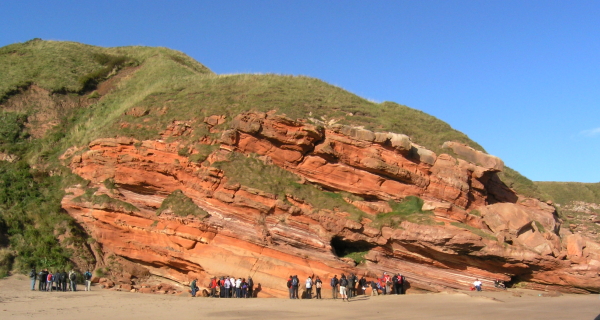
Devonian Old Red Sandstone at Pease Bay, SE Scotland. Photo: Chris Rowan, 2009.
However, only a little further south the cliffs are composed of older Silurian (420-440 million years old) marine greywackes (another prosaically named lithology) that are clearly much more deformed, with lots of tight folds leading to almost vertical bedding.
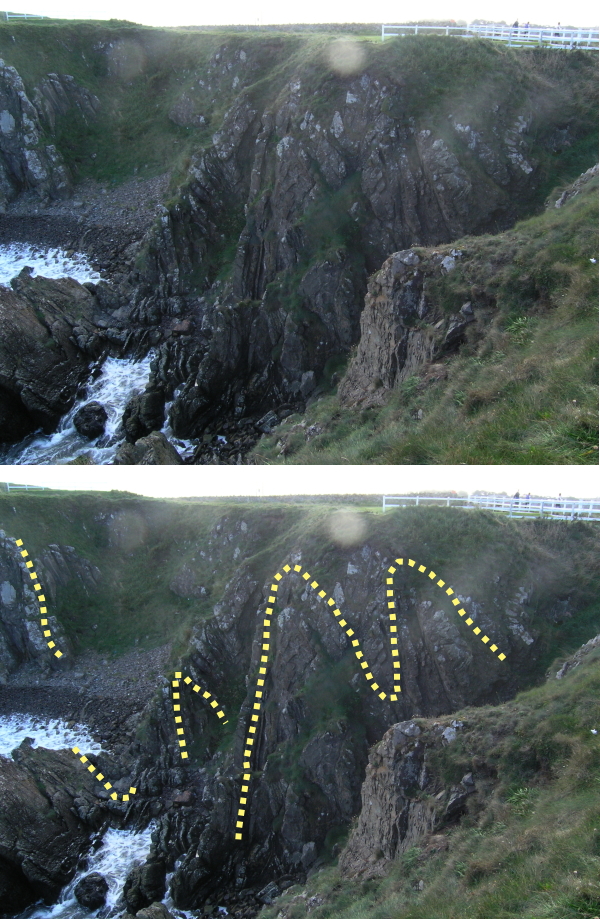
Folded Silurian greywackes in the cliffs at Eyemouth, SE Scotland. Photo: Chris Rowan, 2009.
Given this structural contrast, you can’t help wondering – what happens at the contact between these two units? In 1788, James Hutton was wondering just that, and chartered a boat to find the contact. Modern geological pilgrims tend to take an overland route instead, but we all end up at the same place: Siccar Point.
In the picture above, a sharp contact between the shallowly dipping red sandstones and the steeply dipping greywackes can be seen both in the cliffs to the right, and on the wave-cut platform to the left. If you have a head for heights, it is possible to scramble down a steep grassy slope to the platform and put your finger on the place where almost vertical beds meet almost horizontal ones: a textbook angular unconformity.
One advantage of being able to put your nose right on the contact is that you can see some details that you might otherwise miss. At this range, it is easy to spot that the contact between the two units is sharp, but it is not completely flat. Furthermore, the lowest part of the overlying Old Red Sandstone contains fragments of rock that are considerably larger than sand; some are at least as large as your fist, and many of the fragments in this basal conglomerate are bits of the underlying Silurian greywacke. These are all signs that the greywackes were exposed at the surface, being eroded, for a considerable period of time before the Old Red Sandstone was laid down on top of them.
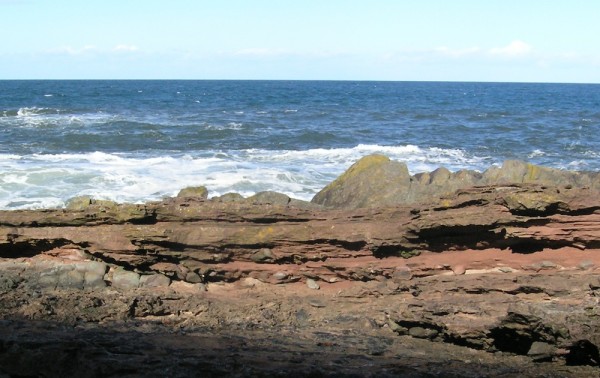
The irregular topography and basal conglomerate show that this is an erosional contact (click to enlarge). Photo: Chris Rowan, 2009.

Many eroded chunks of the underlying greywackes can be found in the lowest part of the Old Red Sandstone. Photo: Chris Rowan, 2009.
However, if we now raise our heads to look at the contact in the cliffs, we can’t help but notice that it looks a bit different: the contact is more planar, and there is no real sign of a conglomerate layer at the base.
In fact, even though the sandstone beds are dipping slightly out of the cliffs, it seems that the contact in the cliffs occurs at a slightly higher level in the stratigraphy than the contact at the shore. We appear to be looking at paleotopography. The cliffs mark a small hill in the eroded Silurian bedrock, whilst the wave-cut platform marks a channel which collected erosional debris, explaining the conglomerate layer.
If you want to really get Deep Time, places like this are where you start. Once you understand that the vertical beds below the contact were originally horizontal, the vast amounts of time required to produce this structure leap right out at you from the outcrop.. It tells a geological story that began more than 400 million years ago with the deposition of the greywackes off an ancient coastline, and continues to the present day. So far there are six chapters, detailing folding and uplift during the creation of a mountain belt; the slow death of that mountain belt as wind and water ground it away; the formation of lakes and sand dunes on a warm, arid continent during the Devonian; a further, more gentle tectonic upheaval that led to the whole sequence being tilted; and finally, a further bout of erosion that has created the Siccar Point seen by Hutton, and tens of thousands of geologists and geology students since.
As an extra treat, I also took a video camera on my trip to Siccar Point, and I’ve spliced the best of my footage together to make the short film below, which hopefully gives you a sense of where the unconformity is, and what it looks like. I apologise for the shakiness of some of the footage – it was a very windy day!

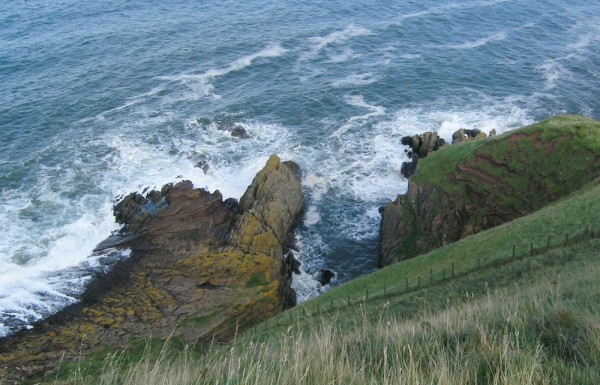
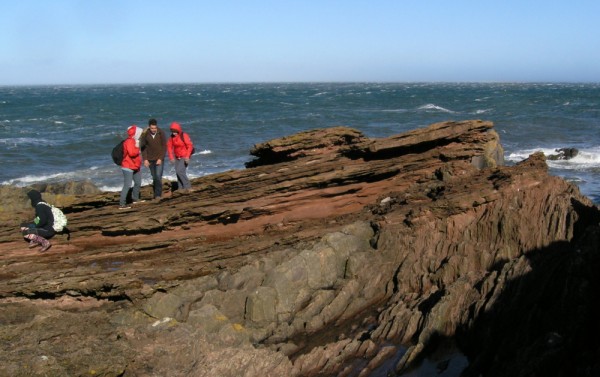
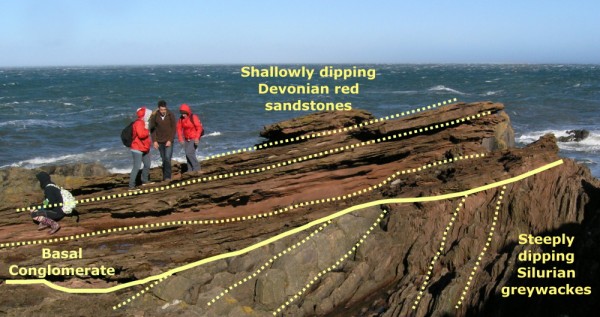
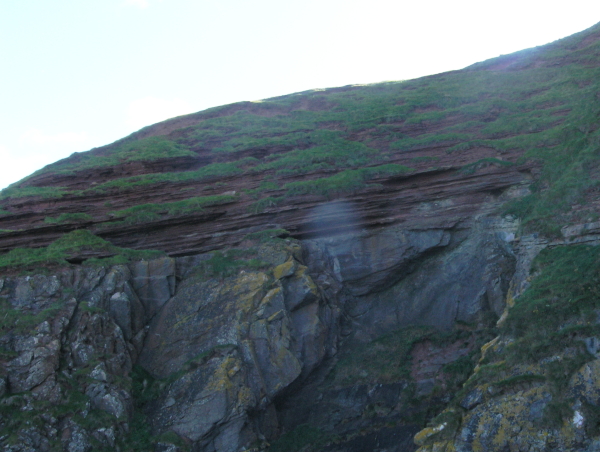
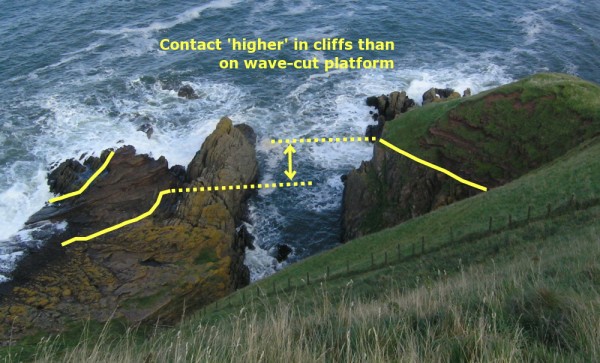

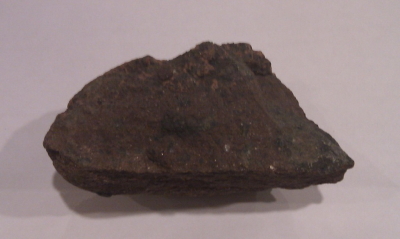

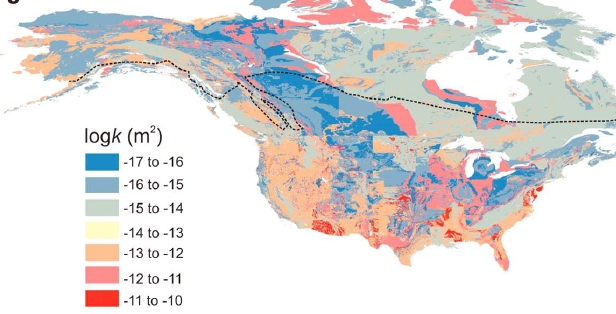
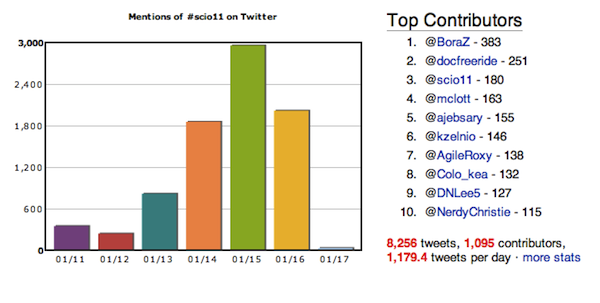
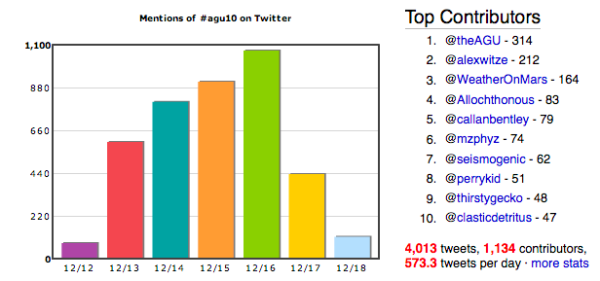
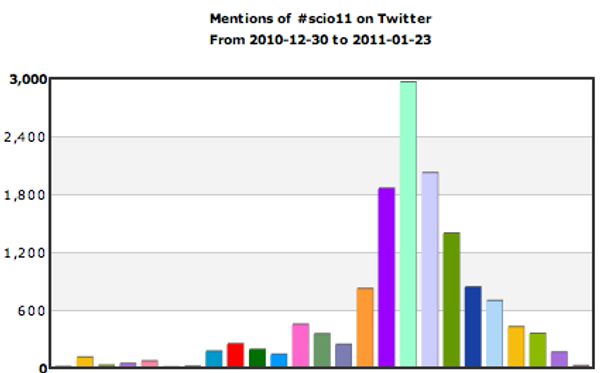



Nice plan for content warnings on Mastodon and the Fediverse. Now you need a Mastodon/Fediverse button on this blog.